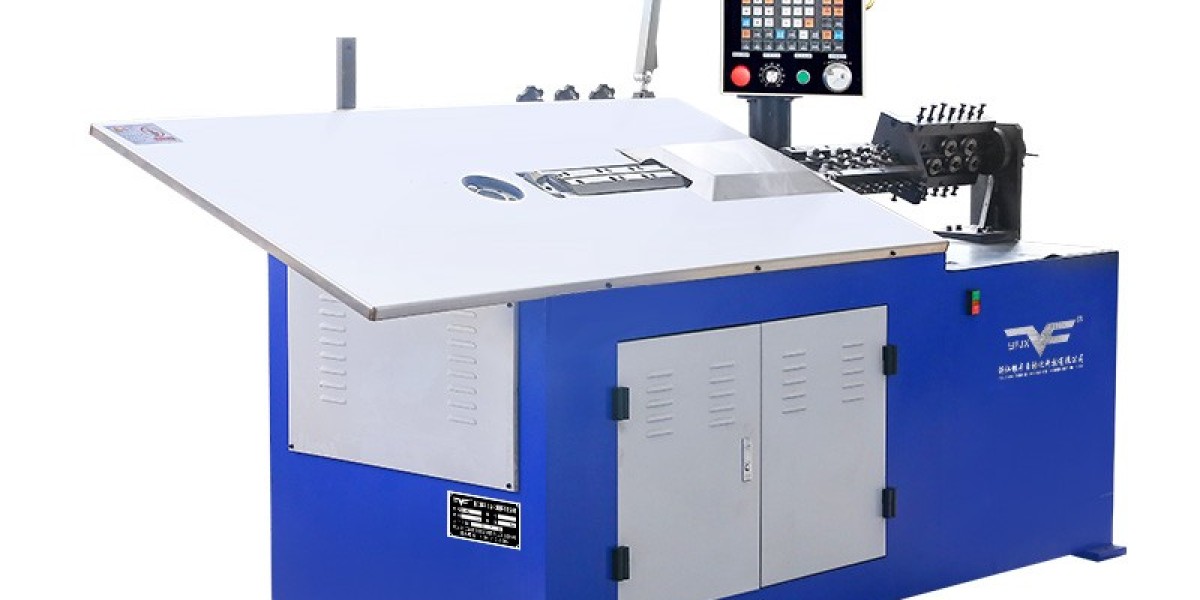The 3D 2D CNC Wire Bending Machine exemplifies the integration of automation with precision engineering to deliver enhanced efficiency on the production floor. This state-of-the-art system is designed to manage both two-dimensional and three-dimensional bending operations, streamlining processes that were once labor-intensive and prone to human error.
At its core, the technology represents a convergence of digital control systems and mechanical innovation. With computer numerical control (CNC) at its heart, the machine operates on meticulously programmed instructions that govern every aspect of the bending process. This high level of automation minimizes variability, ensuring that each bending operation adheres to strict tolerances. By reducing reliance on manual intervention, manufacturers can expect not only improved consistency in product quality but also significant reductions in operational downtime.
One of the primary advantages of this advanced wire bending machine is its flexibility. In today’s market, where production demands are constantly evolving, the ability to rapidly switch between various bending tasks is invaluable. The machine’s dual functionality allows production lines to adapt quickly to changes in design specifications. This adaptability is particularly beneficial for industries that require frequent modifications to product lines, as it eliminates the need for extensive retooling and recalibration. As a result, manufacturers can achieve shorter lead times while maintaining competitive production standards.
The design of the 3D 2D CNC Wire Bending Machine also emphasizes operator accessibility. Its intuitive control interface enables operators to program complex bending sequences with relative ease. With a streamlined setup process, the machine can be integrated into existing production environments with minimal disruption. This user-centric approach not only reduces the learning curve but also enhances overall operational safety, as the likelihood of operator error is significantly diminished.
Economic considerations further reinforce the value of this technology. Although the initial capital investment is notable, the long-term benefits include reduced labor costs, minimized material waste, and improved production predictability. By automating repetitive tasks, companies can allocate their workforce to areas that require more strategic input, fostering a culture of innovation within the organization. Over time, the efficiencies gained from such advanced machinery contribute to a more sustainable cost structure and a competitive edge in the marketplace.
Environmental sustainability is another key aspect of this technology. With the precision offered by CNC controls, material usage is optimized, resulting in less scrap and reduced energy consumption during production. This efficient use of resources supports both economic and ecological goals, aligning with modern industry standards that prioritize sustainability.
Looking ahead, the potential for further integration with digital manufacturing platforms is immense. As factories transition toward smart production environments, the role of CNC machinery will expand. The ability to connect wire bending machines to centralized data systems enables real-time monitoring and predictive maintenance, ensuring that production lines operate at peak efficiency. Manufacturers investing in these advanced systems today are well-positioned to harness future technological developments, driving continuous improvement across operations.
In summary, the 3D 2D CNC Wire Bending Machine is a robust solution for modern manufacturing challenges. Its precision, flexibility, and user-friendly design combine to create a tool that not only enhances operational efficiency but also supports a forward-thinking approach to production management. As industries continue to evolve, embracing such innovations is essential for sustainable growth and improved competitiveness.








